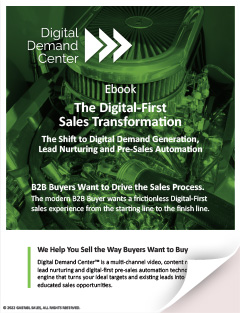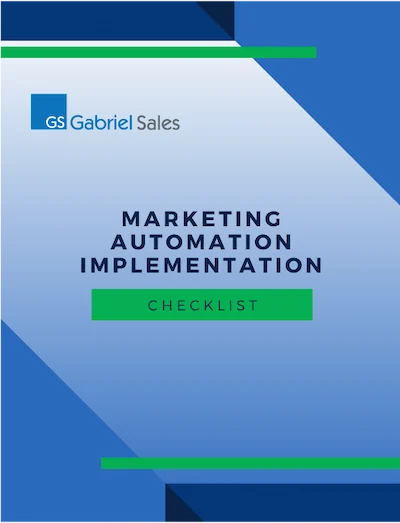 The 2014 B2B Content Marketing Report done by the Content Marketing Institute and MarketingProfs found that 93% of B2B companies currently engage in content marketing.
The 2014 B2B Content Marketing Report done by the Content Marketing Institute and MarketingProfs found that 93% of B2B companies currently engage in content marketing.
These companies have realized that today, buyers begin to interact with B2B companies digitally before engaging with sales directly. They know that in order for buyers to interact with their company digitally, they need to have digital content for buyers to interact with.
While it is great that so many companies are engaged in creating content, many B2B companies are failing to understand the true function and goal of marketing content in relation to the overall sales process.
Many companies are treating their content—blogs, white papers, webcasts, nurturing emails, etc.—like an extension of their sales pitch. They see every blog post as another chance to push their product or sell their service. They see every email as the perfect place to try to close the deal. The main issue with marketing content like this is that the focus is on the company, not the customer. The emphasis is put on the company’s goal (selling) rather than the customer’s goal (solving a problem).
There is always going to be a time and place to sell. However, many of the prospects that interact with your marketing content are nowhere near ready to buy. In fact, only about 5% of B2B prospects are ready to buy at any given time. The other 95% are at various stages of their buying cycle—discovery, education, verification, etc.
This means that if all of your marketing content is simply an ongoing sales pitch, only 5% of your audience is going to be receptive to it at any given time. The other 95% still want to be educated or compare their options, and your sales pitch is going to seem pushy or annoying.
While talking about your product or service is okay, try to keep the hard sales messaging on your product and service related pages only. In your marketing content like blogs, white papers and webcasts, your focus should be providing valuable information that your prospect can use in some way. By providing value prior to purchase, you help to build trust with your prospect, which is a prerequisite for most–if not all–B2B deals.
To make sure your marketing content is focused on helping the buyer solve problems (rather than selling the buyer a product/service), you should first work to clearly understand what those problems are. Then, create content that answers any and all questions your typical buyer may have in trying to solve those problems.
A simple rule for determining whether your content is company/selling-oriented or customer-oriented is to ask, “What does this piece of content do for the prospect?”
If your only answer is, “It convinces them that my product is the best” or, “It explains why they should buy my service,” you probably should go back to the drawing board. ”If your answer is something like, “It gives them information on the pros and cons of SaaS solutions” or, “It explains the five most important aspects of energy efficiency,” you are probably on the right track.
To learn more about creating compelling and engaging B2B marketing content, read The New Rules for B2B Customer Engagement. Feel free to contact us with any questions.




